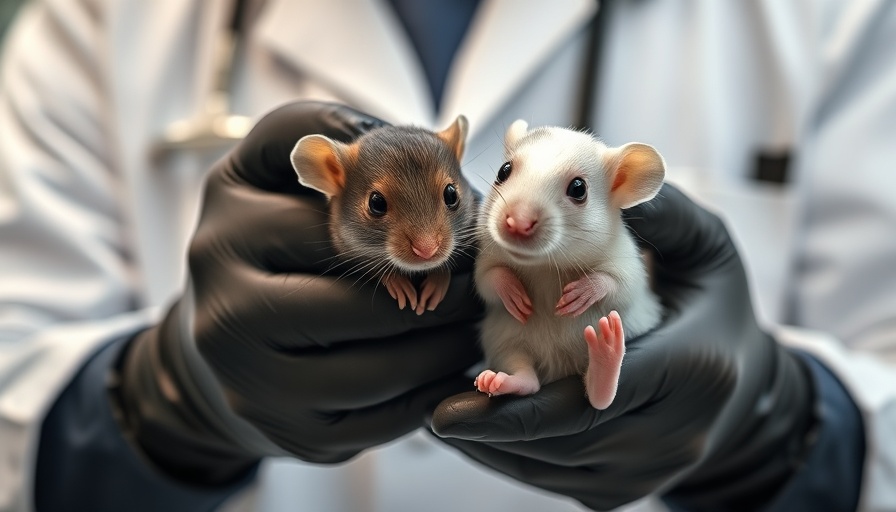
Revitalizing Extinct Species: The Woolly Mouse Initiative
In a remarkable advancement for genetic engineering, scientists at Colossal Biosciences have successfully created genetically engineered mice that possess traits reminiscent of the extinct woolly mammoth. This pioneering project represents a significant step towards the much-debated goal of de-extinction, with hopes of eventually resurrecting larger and more iconic creatures from our planet's past.
The Science Behind Woolly Mice
The woolly mouse, born from genetically modified embryos implanted into lab mice, showcases characteristics such as longer, woolly fur, a key adaptation of the ancient mammoth. Chief Science Officer Beth Shapiro emphasizes that this achievement validates the long-term viability of their ambitious de-extinction project. The methodology utilized involves comparing the genomes of woolly mammoths with those of their closest extant relatives, the African and Asian elephants, to identify critical genes responsible for traits like cold resistance.
Will De-extinction Solve Ecological Problems?
Revive & Restore, a California nonprofit with ambitions similar to Colossal, initiated the Woolly Mammoth Revival Project. Their focus is not just on resurrecting the mammoth for the sake of nostalgia; the intention is to reintroduce a version of this species into its native ecosystem to help combat climate change by stabilizing permafrost. For instance, it is theorized that a mammoth-like creature, sometimes dubbed 'mammophant', could aid in maintaining the cold necessary for the continued existence of permafrost, thus reducing greenhouse gas emissions from melting ice.
Methodologies and the Promise of Genetic Engineering
While much of the research revolves around genome editing technologies like CRISPR-Cas9, it’s important to note that reviving an extinct species is not as simple as cloning. Geneticists face the challenge of engineering a hybrid that can survive in today’s environment, especially as various ethical and ecological concerns arise about creating these creatures. For instance, critics worry about the potential impact of reintroducing these engineered species into wild ecosystems.
Critics of De-extinction: The Ethical Debate
The prospect of de-extinction raises significant concerns among conservationists and critics alike. Some argue that efforts to bring back species like the woolly mammoth divert much-needed resources away from conserving currently endangered species. Furthermore, ethical questions loom: should humans take it upon themselves to reverse extinction, especially when it's often a result of human activity? Critics like David Ehrenfeld voice concerns that even if mammophants could be created, they might struggle to adapt and survive in the modern Arctic, where their inherited behaviors from Asian elephants may not carry over successfully.
A Forward Outlook on Genetic Intervention and Conservation
The creation of the woolly mouse underlines the rapid innovations in genetic engineering that hold promise for biodiversity restoration. While these projects can stimulate discussions about ethical wildlife management and conservation, they also highlight the intricacies of ecological balance and the limits of using technology. As researchers make strides toward their ultimate goals, the dialogue around de-extinction makes it clear: while we may have the power to revive the past, we must consider the broader ecological implications of such actions.
Actionable Insights for Business Leaders
For businesses in tech and marketing industries, the advances made in genetic engineering can encourage cross-disciplinary collaborations that challenge conventional approaches. As the conversation around gene editing evolves, companies can position themselves as pioneers in ethics and responsibility in technological advancement.
Understanding these developments is crucial for decision-makers. Emphasizing sustainable practices and ethical considerations in innovative projects can redefine performance benchmarks in the industry. Engaging with topics like de-extinction may also allow businesses to resonate with conscious consumers and enhance their brand identity.
Conclusion: A Call for Responsible Action
Whether you're in a tech-driven company or a marketing agency, the implications of scientific advancements like the woolly mouse initiative can be profound. Engaging in conversations about sustainability through the lens of genetic engineering not only expands your understanding but can also position your organization on the frontier of responsible innovation. Let's cultivate dialogues that integrate ethics into our approach to groundbreaking technology.
 Add Row
Add Row  Add
Add 




 Add Row
Add Row  Add
Add 

Write A Comment